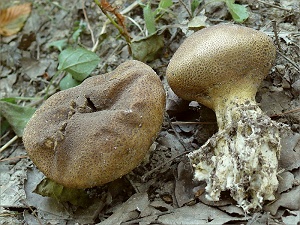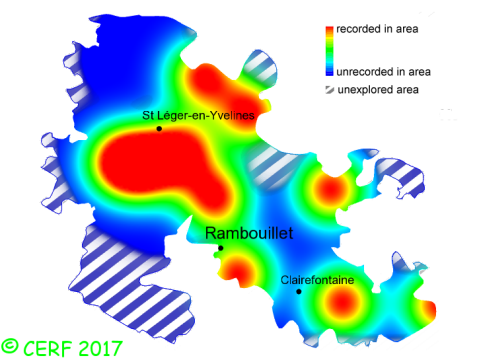| Scleroderma verrucosum (Bull.:Pers.) Pers. |
|
|
|
|
|
|
The fruiting body is irregularly globular, tough, cracked, with small regular flat scales without areola on a pale background, the skin being less than 1mm thick, yellow to brown, with a short root-like stem, formed by an assembly of mycelial strands, and about as long as the fruiting body is large. The flesh is whitish at first, then grey and ultimately black to dark brown, the outer shell reddening when exposed to air; its taste is mild to acrid; the odour is unpleasant, of rubber or coppery. The fertile surface is internal: the spores are released as dust when mature. The spore print is brown.It grows on the ground, in broad-leaved and coniferous woods, gardens, sandy lands on rich, dry and warm soils. The fruiting period takes place from June to December.
Distinctive features : globular shape spotted with small dark brown scales without areolas ; thin outer shell (less than 1mm thick); well-developed and thick pseudo-stem constituted by mycelial strands; slight reddening of outer shell when exposed to air; on rich and dry soils Scleroderma verrucosum is infrequent and scattered in the forest of Rambouillet, and is occasional, more generally speaking . | ||
|
page updated on 14/01/18

